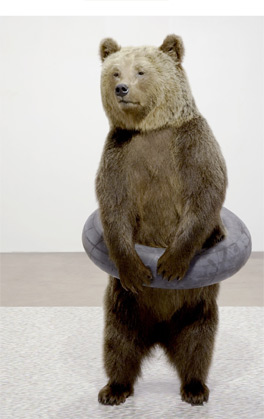Difference between revisions of "Classroom:NTNU, LING 1113 (2009) - Norwegian Verbs of Motion"
(→List of Norwegian Motion Verbs (short comments and some examples)) |
|||
| Line 83: | Line 83: | ||
The motion verb ''falle'' encodes involuntary motion downwards through the ground ''air''. | The motion verb ''falle'' encodes involuntary motion downwards through the ground ''air''. | ||
| − | ''' | + | '''Synke''' |
| − | + | "Stenen sank til bunnen av sjøen", meaning "the stone sank towards the bottom of the sea". | |
Encodes gradual downwards uncontrolled movement through a ground | Encodes gradual downwards uncontrolled movement through a ground | ||
Revision as of 16:33, 13 July 2009
In this wiki we define Motion Verbs as the verbs - apearing alone or in a complex - as verbs denoting movement. This might be movement from A to B, that is locomotion, or it might be movement inside the same scene, that is single motion. As mentioned above, some motion verbs might be part of a complex and thus denoting the movement in cooperation with a preposition.Some motion verbs indicate that a path -abstract or concrete- is covered when the action denoted by the verb is carried out. Some prototypes of motion verbs implying a path are 'go' and 'run'. Note that the path is not necessarily explicitly mentioned in the predication sentence indicating that a path is covered; the path is often implied and understood as being present by virtue of the speaker's and hearer's knowledge of the concept denoted by the respective verb.
It might also be the case that there is a goal of the movement denoted by the verb. Again, this goal might not be explicitly uttered; the presence of a goal is understood as implied in the concept expressed by the verb.
List of Norwegian Motion Verbs (short comments and some examples)
"Gå" encodes the classical movement of a human figure, by the movement of legs. This does not necessarily encode a path, and is thus a single motion. However, the verb is often used to encode simply path, and not movement of feet. An example could be "Jenta går mot huset", which means "the girl walks towards the house". "De gikk fort gjennom parken", which means "they walked quickly through the park".
"Springe/løpe" The synonymous motion verbs "springe" and "løpe" encode motion by the use of feet, where the feet jump up and down from the ground, one foot at the time, in rapid succession. This can be a single motion, but usually encodes a path. Here some examples:
"Dra/fare"
"De dro tidlig fra middagen", "they left the dinner early". Is an example.
"Dra" and "Fare" are synonymous motion verbs which encode motion with a path moving the Figure away from the Ground. "De dro tidlig fra middagen", "they left the dinner early".
"Stikke" Originally, this word meant to swiftly move away from the Source and then back again, but has later come to mean general movement away from a Source. Swiftness is however often implied, and sometimes also return. This gives us examples like:
vi stakk fra hagen før Hr. Nilsen kom hjem
we ran from the garden before Mr. Nilsen got home
vi stikker en tur på butikken
we will take a quick trip to the shop (and then return)
jeg stikker på skolen
I'll leave for school now
This verb usually encodes movement away from a source, often only for a short period of time or swiftly
"Rømme" Encodes movement away from a source, either quickly or from a place from which movement is restricted, or both. It almost always implies the presence of some sentient entity that would try to hinder the theme's movement.
"Vi rømte fra kafeen"
we escaped the cafè.
"Komme"
"Komme" is a motion verb which encodes motion of the theme towards the goal.
"Han kommer hjem til oss i kveld"
he is coming over at our place tonight.
"Svømme" Svømme encodes motion through a liquid ground and that the theme is completely or almost completely submerged in the liquid through which the movement takes place. If the medium of conveyance is the feet, and the theme is not submerged in the liquid body, the verb vasse is used instead.
"They swam in the swimming pool"
de svømte i svømmebassenget.
"Fly" Fly encodes motion through the ground air, without contact with the earth, usually by aerodynamic means.
"Fuglen fløy over gjøkeredet"
the bird flew over the cuckoo's nest.
"Kjøre" encodes motion with vehicular conveyance.
"Sykle" encodes motion by use of bicycle as medium of conveyance.
Ramle encodes non-voluntary motion through the ground air.
The motion verb falle encodes involuntary motion downwards through the ground air.
Synke "Stenen sank til bunnen av sjøen", meaning "the stone sank towards the bottom of the sea". Encodes gradual downwards uncontrolled movement through a ground
Encodes gradually upwards movement.
Back to Motion and Space
